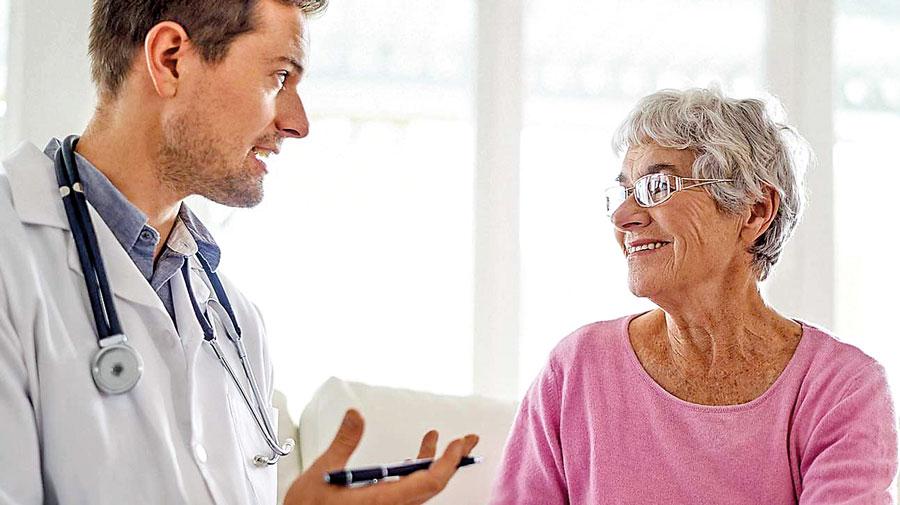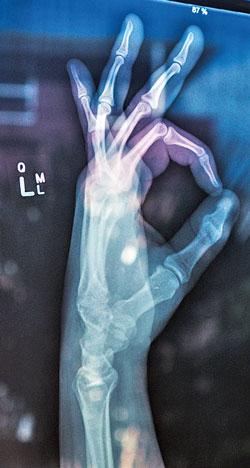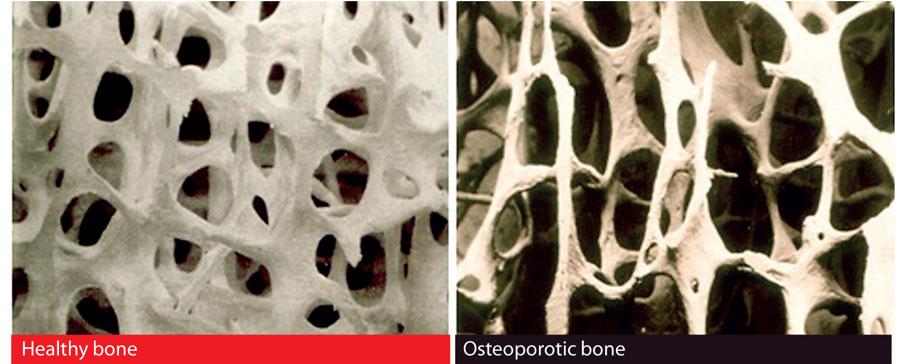Reply To:
Name - Reply Comment

 Staying healthy is not only making lifestyle changes to prevent conditions like cancer and heart disease. Keeping your bones healthy to prevent osteoporosis too should be given priority in your wellness list, the National Osteoporosis Foundation states.
Staying healthy is not only making lifestyle changes to prevent conditions like cancer and heart disease. Keeping your bones healthy to prevent osteoporosis too should be given priority in your wellness list, the National Osteoporosis Foundation states.
Osteoporosis is a condition in which the bones become weak and can break from a minor fall or, in serious cases, from a simple action such as a sneeze. Being at risk of osteoporosis means you are more likely to get this disease. The U.S. Surgeon General reports that nearly half of all women older than 50 would break a bone because of osteoporosis. An estimated one in four men will too.
Breaking a bone is serious, especially when you are older. Broken bones, due to osteoporosis, are most likely in the hip, spine and wrist, but any bone can be affected. It could cause severe pain that might not vanish. For some people, it causes height loss and posture that is stooped or hunched. This happens when the bones of the spine, called vertebrae, begin to break or collapse. Osteoporosis may even keep you from getting around easily and doing the things you enjoy. This can make you feel isolated and depressed. It can also lead to other health problems. Twenty-five percent of seniors who break a hip die within one year from problems related to the fracture itself or surgery done to repair it. Many of those who survive need long-term nursing home care.
You are never too young or too old to improve the health of your bones. Osteoporosis prevention should begin in childhood
You can’t feel your bones growing weaker. You could have osteoporosis now or be at risk for it and not know it. Often, breaking a bone is the first clue that you have osteoporosis. Or maybe you notice that you are getting shorter or your upper spine is curving forward. At this point the disease is advanced. Fortunately, there are tests, called bone mineral density (BMD) tests, which can tell if you have osteoporosis before you break a bone, making it possible to treat the disease early and prevent further damage.
It will help you find out whether you are at risk of osteoporosis and also guide you in working with your doctor to prevent or treat it. If you don’t have osteoporosis, you can take steps now to prevent it. If you already have it, you should seek treatment. Treatment can prevent further bone loss and decrease your chances of breaking a bone. It can also help you stay more active and improve the quality of your life.

When you have osteoporosis, your bones have lost the minerals that kept them strong. Weakened bones break very easily. In fact, people with osteoporosis can break a bone just by sneezing, picking up a bag of groceries.
Since osteoporosis is a disease of the skeleton, it is important that you know some basics about your bones. While skeleton loses old bone and forms new bone throughout life, children and teenagers form new bone faster than they lose the old bone. In fact, even after they stop growing taller, young people continue to make more bone than they lose. This means their bones get denser and denser until they reach what experts call peak bone mass. This is the point when you have the greatest amount of bone you will ever have. It usually happens between the ages of 18 and 25.
In midlife, bone loss usually speeds up in both men and women. For most women, bone loss increases after menopause, when estrogen levels drop sharply. In fact, in the five to seven years after menopause, women can lose up to 20 percent or more of their bone density. Osteoporosis happens when you lose too much bone, make too little bone, or both. The more bone you have at the time of peak bone mass, the better you will be protected against weak bones once bone loss begins.
Calcium being a building block of bone is the most important mineral for healthy bones. Vitamin D is important because it helps absorption of calcium into the body. Like calcium, phosphorous is a component of bone and this mineral is naturally present in many foods. Magnesium, vitamin K, vitamin B6 and vitamin B12 are also important for bone health and a well-balanced diet contains these nutrients. Eating foods that supply protein is also important for health.
Caffeine, soft drinks, spinach, wheat brands and salt obstruct calcium absorption. Some medications can be harmful to bones, especially if taken at high doses or for a long time. The riskiest types of medications for bones are glucocorticoids, such as cortisone, prednisone, and methylprednisolone.
Osteoarthritis and osteoporosis are distinctly different disorders. Osteoarthritis is a disease of thinning joint cartilage; whereas osteoporosis is a thinning of the bone itself. Osteoarthritis occurs when the cartilage cushioning joints wear away with time or injury. Unlike osteoporosis, osteoarthritis does not make bones weaker or more likely to break. While there are many types of arthritis all of which affecting the joints and surrounding tissue, after osteoarthritis, the next most common type is rheumatoid arthritis. It is an autoimmune disease treated with glucocorticoid medications which has direct effects to RA, it damages bone and increase risk of osteoporosis
and fractures.
No matter your age, the recipe for bone health is simple for both men and women -
Get enough calcium and vitamin D
Exercise regularly
Make healthy lifestyle choices
Talk to your healthcare provider about your bone health
Eat plenty of fruits and vegetables that benefit every organ, including your skeleton. Two nutrients that are of special importance to your bones are calcium and vitamin D. Calcium is an essential nutrient which provides the material for building new bones.
In food, calcium never exists on its own. It is always combined with one or more other elements, in what is called a compound. These compounds contain different amounts of elemental calcium, which is the actual amount of calcium in the supplement.

The body needs vitamin D to absorb calcium. Your skin makes vitamin D when it is exposed to the sun. In fact, sunlight is the main source of vitamin D for people all over the world. However, getting sun is a risk factor for skin cancers and premature skin aging. Liver, fatty fish, and egg yolks also contain small amounts of vitamin D. It is very difficult to get enough of this nutrient from food, so many people need to take a multivitamin or a vitamin D supplement. Many calcium supplements also contain vitamin D.
The National Osteoporosis Foundation recommends between 800 and 1,000 units (IU) of vitamin D3 daily for most people age 50 and older. Some people may need more. Adults under age 50 should get between 400 and 800 IU of vitamin D3 daily. Supplements of vitamin D are available as either vitamin D2 or D3. Vitamin D3 is the better choice to protect your bones. It is also called cholecalciferol.
Experts recommend a type of BMD test using a central DXA (which stands for dual-energy x-ray absorptiometry). It is the preferred method to diagnose osteoporosis. Most healthcare providers measure BMD in the hip and or spine. Your BMD test result is a number called a T-score. It tells you how your bones compare to those of healthy young adults. The difference between your BMD and that of a healthy young adult is described as a standard deviation (SD). Usually 1 SD decrease in BMD equals a 10% to 15% drop in bone density. Greater than two and a half SDs below normal means you have significant risk for fractures; you
have osteoporosis.
Source of information - NOF Organization, Arlington,
Virginia, USA